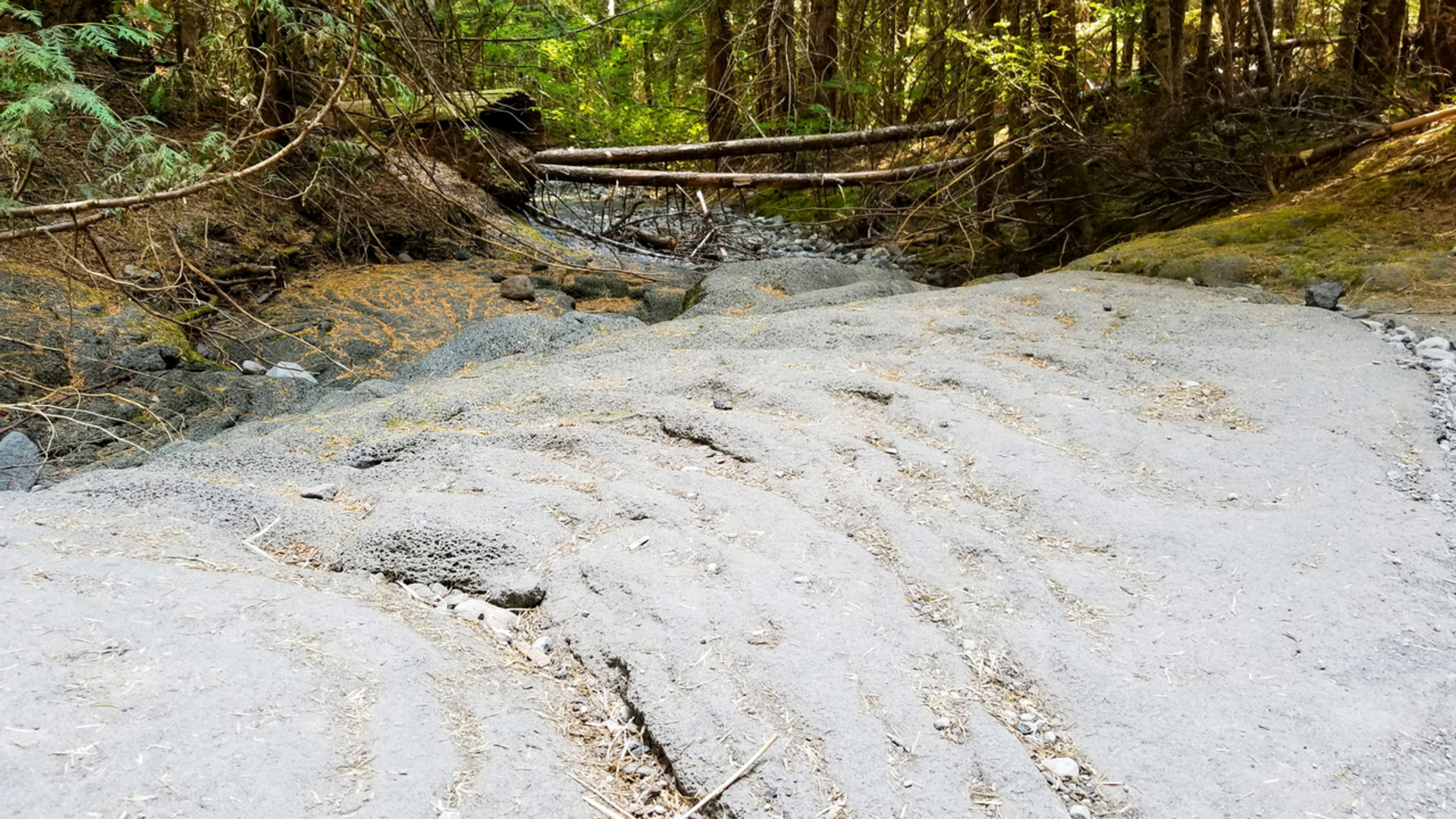Download
Preview
Add to list
More
4.4 km
~1 hrs 6 min
135 m
Loop
“Embark on a chilly, dark, and thrilling subterranean hiking journey through the Lower Ape Cave's ancient lava tube.”
The Lower Ape Cave - Passage Trail is a unique underground hiking experience located near Skamania County, Washington. Spanning approximately 4 km (2.5 miles) with an elevation gain of around 100 meters (328 feet), this loop trail offers an exciting adventure for those looking to explore beneath the Earth's surface.
Getting to the Trailhead
To reach the trailhead, if you're driving, you'll want to head towards the Ape Cave Interpretive Site, which is accessible via Wind River Highway from the town of Cougar. There is a parking area available for hikers. For those opting for public transportation, check local schedules for buses that get you closest to the site, and plan for a taxi or rideshare for the remaining distance.
The Cave Experience
As you embark on the Lower Ape Cave - Passage Trail, you'll be delving into the longest continuous lava tube in the continental United States, formed over 2,000 years ago by flowing lava. The cave maintains a constant temperature of around 42°F (5.5°C), so it's essential to dress warmly and wear sturdy, closed-toed shoes with good traction.
The trail begins at the main entrance of the Ape Cave, where you'll descend a staircase into the darkness of the lava tube. It's crucial to have a reliable source of light—headlamps are recommended over handheld flashlights for hands-free navigation. HiiKER can be used to help with above-ground navigation, but remember that GPS signals won't reach inside the cave, so physical maps and compasses are also useful.
Navigating the Cave
Once inside, you'll be surrounded by the cave's unique geological features, including the smooth, ropy walls created by the flowing lava and the jagged breakdown piles where the cave roof has collapsed. The trail is mostly flat but can be rocky and uneven in places, with some sections requiring you to navigate over boulders and through narrow passages.
Approximately halfway through the cave, you'll encounter the Meatball, a large block of lava that fell from the ceiling while the lava was still flowing. It's a significant landmark within the cave and a popular spot for a brief rest and photo opportunity.
Wildlife and Preservation
While wildlife inside the cave is sparse, you may encounter bats, which are vital to the ecosystem. It's important to minimize disturbance to these creatures and to avoid touching cave walls and formations to prevent damage and the spread of White Nose Syndrome, a disease that affects bats.
Historical Significance
The Ape Caves are named after the St. Helens Apes, a local Boy Scout troop that explored the caves in the 1950s. The caves and the surrounding area are rich in volcanic history, with the Mount St. Helens eruption in 1980 being a recent event that shaped the landscape.
Exiting the Cave
The trail loops back to the surface near the lower entrance of the cave. As you emerge from the underground passage, take a moment to adjust to the light and enjoy the surrounding old-growth forest before returning to the trailhead.
Preparation Tips
Before setting out, ensure you have the necessary equipment, including warm clothing, sturdy footwear, a headlamp with extra batteries, and a backup light source. It's also wise to bring water and snacks, as the cool cave environment can be deceptively dehydrating.
By preparing adequately and respecting the natural and historical significance of the Lower Ape Cave - Passage Trail, hikers can look forward to an unforgettable subterranean adventure.
What to expect?
Activity types
Comments and Reviews
User comments, reviews and discussions about the Lower Ape Cave - Passage Trail, Washington.
4.25
average rating out of 5
4 rating(s)

